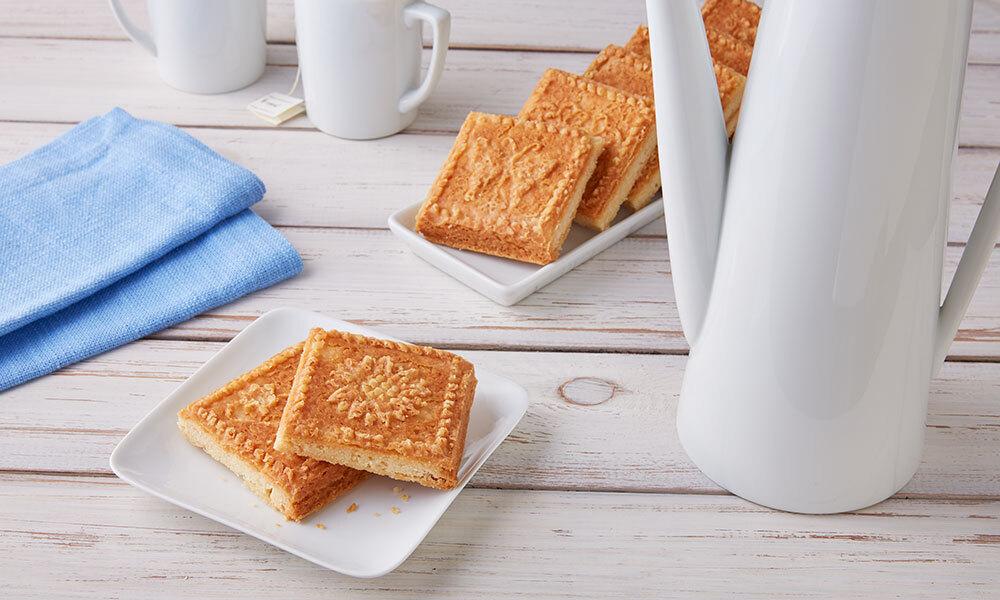
The Catholic Women of Scotland
A number of years ago, my family had the opportunity to visit the United Kingdom. The entire trip was amazing, but the most memorable city we visited was Edinburgh, Scotland. The architecture was beautiful, and the city made for some unexpected surprises.
A number of years ago, my family had the opportunity to visit the United Kingdom. The entire trip was amazing, but the most memorable city we visited was Edinburgh, Scotland. The architecture was beautiful, and the city made for some unexpected surprises.
When we arrived in Edinburgh, I knew we would be visiting a castle on a hill inside the city. As we were making our way up the main street lined with shops and restaurants, it was nearing lunchtime. Our time there was limited, so we grabbed a quick snack at a cafe. I ordered a piece of Scottish shortbread and English tea to go, and we continued up the street toward our destination. When we arrived outside the castle, I dove right into the freshly made shortbread and was immediately taken aback by how delicious it was! I had eaten shortbread back in the States many times, but it was always off a shelf and not warm. Another reminder to try local cuisine in its place of origin!
I continued to enjoy the snack and listened attentively to our assigned guide. For centuries, the castle was home to kings and queens, and I was surprised to learn that one was even made a saint!
Margaret was an English princess born in Hungary around the year 1045. At the age of 10, her father was called back to England as a possible successor to the throne, but he tragically died upon arrival. In 1066 Margaret’s widowed mother and family fled from William the Conqueror and headed toward Northumbria, England, but a storm threw their ship off-course and they landed farther north in Scotland, where she ended up marrying the king there, becoming Queen of Scots.
As Queen, she lived a life of holiness and piety as she devoted all of her time to serving Christ and the poor. She was instrumental in building several churches, including the Abbey of Dunfermline, which housed a relic of the true cross. She encouraged the people of Scotland to devote their lives to grow in holiness and prayer. Queen Margaret lived a life of extraordinary virtue both in her personal life as a wife and mother and as a public servant to her adopted country of Scotland. Saint Margaret died Nov. 16, 1093, and her feast day is celebrated on that date.
Eight years have passed since our trip to Scotland, but that delicious shortbread remained in my memory. I wanted to find a similar recipe, so I could enjoy it right out of the oven, as I had eaten it. And then it hit me … a good friend of ours, Maureen, was born in Scotland and she cherishes her Scottish roots. This is her recipe.
In the course of my research for this article, I learned that shortbread may have been made as early as the 12th century, but its reinvention and refinement was attributed to Mary, Queen of Scots, another Catholic Queen who reigned in the mid-16th century and also resided in Edinburgh Castle, centuries after Queen Margaret. She had her own on-site chefs who would prepare ‘Petticoat Tails,’ a traditional variation of shortbread enjoyed by the queen. Little did I know, as I stood outside of Edinburgh Castle eight years ago enjoying my shortbread, that I was standing in the same historic structure where it was made famous!
Scottish Short Bread
-
1 pound room temp butter (4 sticks)
-
4 ½ cups flour
- 1 cup caster/superfine sugar (not powdered)
Preheat oven to 325 degrees. In a large bowl, cream butter and sugar. Mix in flour. (alternatively, you can combine everything in a food processor and pulse until it’s thoroughly combined). Roll dough to ¼ inch-thick on a cookie sheet. Pre-cut into desired square size and poke holes in each piece with a fork. This recipe can also be pressed into decorative shortbread molds (as pictured). Bake for 20-35 minutes or until light golden brown. Enjoy!
Recipe Note: If you cannot find store-bought caster/superfine sugar, you can make your own. Just pulse granulated sugar in a blender until fine (not powdered).



